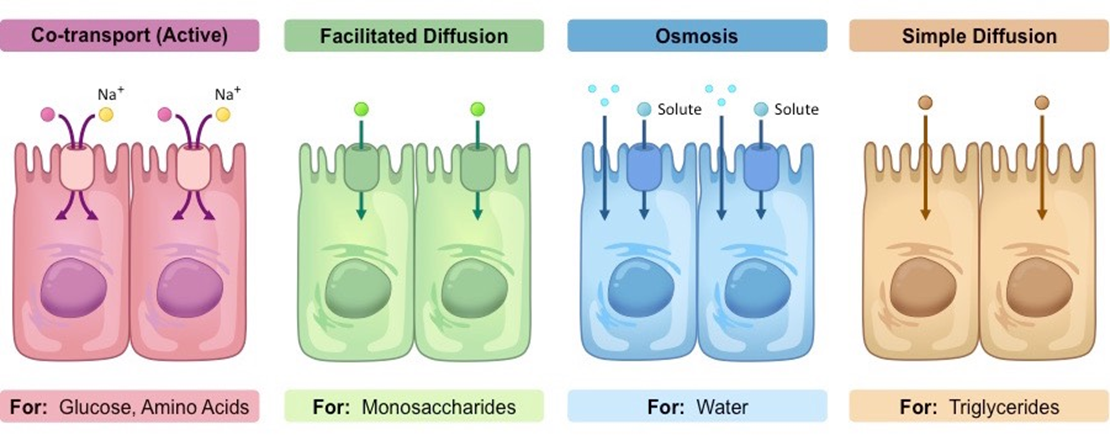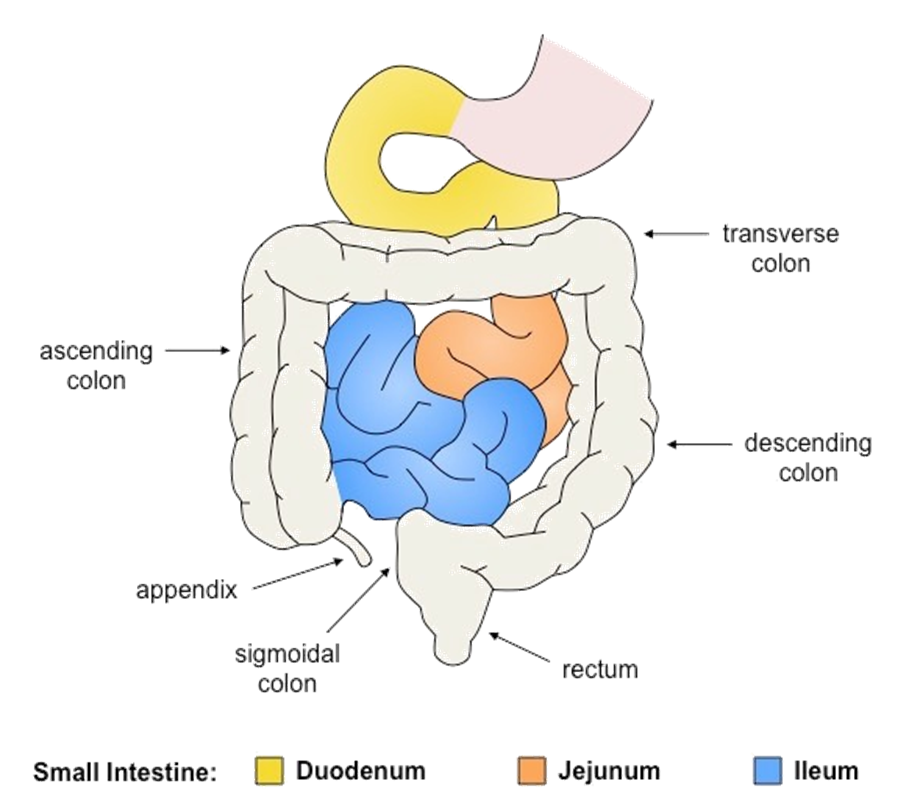Digestive System: Absorption and Elimination
•I can explain how the structure of the small intestine helps to achieve absorption.
Products of digestion, along with substances such as vitamins, minerals water, are absorbed through the wall of the small intestine into the blood
To increase absorption of nutrients into the blood stream, a large internal surface area of the small intestine is achieved by:
Long small intestine (6 – 7m)
Mucosal folds
Villi
Microvilli
•I can describe the structure and function of a villus.
Structure | 1mm long single layer of cells | Contains a lacteal surround by blood capillaries |
Function | ||
Depends on type of molecule. Nutrients absorbed from villi into blood capillaries or lacteals
Blood capillaries
simple sugars, amino acids, water and water-soluble vitamins → Then, carried via the blood to other cells or further processed in the liver.
Lacteals
Fatty acids and glycerol recombine in the cells of the villi to form fats, along with the fat-soluble vitamins
Transported by the lymphatic system

•I can outline the process of elimination.
Defecation is the removal of metabolic wastes that has be produced by metabolic activities, which does not describe the types of wastes in faeces.
•I can describe the composition of faeces.
Large intestine structure and function
Structure: Is shorter than small intestine (length) but the diameter is larger
Made of
Caecum, small pouch SI join LI.
Apendix is attached
Colon, U-shaped part of LI
Rectum, last part of LI
Anus, external opening at end of rectum
Function: Slow movement of material through the large intestine allows water to be absorbed, produces faeces
Bacteria also further break down remaining organic compounds, releasing vitamins and minerals.
What remains after absorption is faeces, which contains:
water
Undigested food (eg. Cellulose)
Bacteria
bile pigments which give faeces their colour
remains of cells that have broken away from the internal lining of the alimentary canal.
